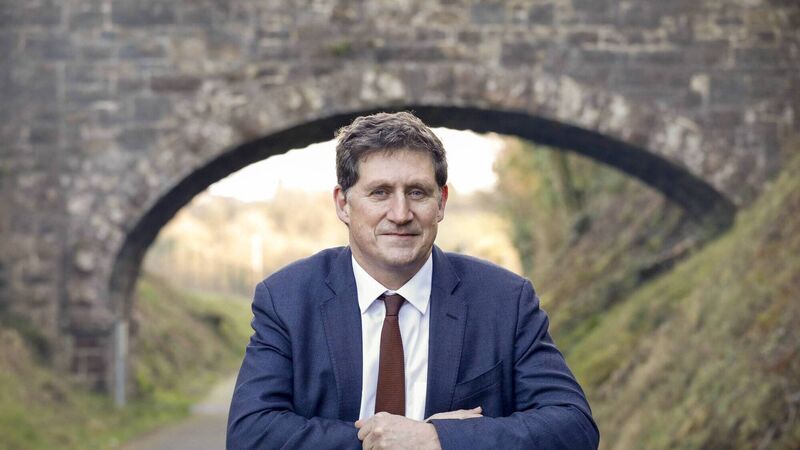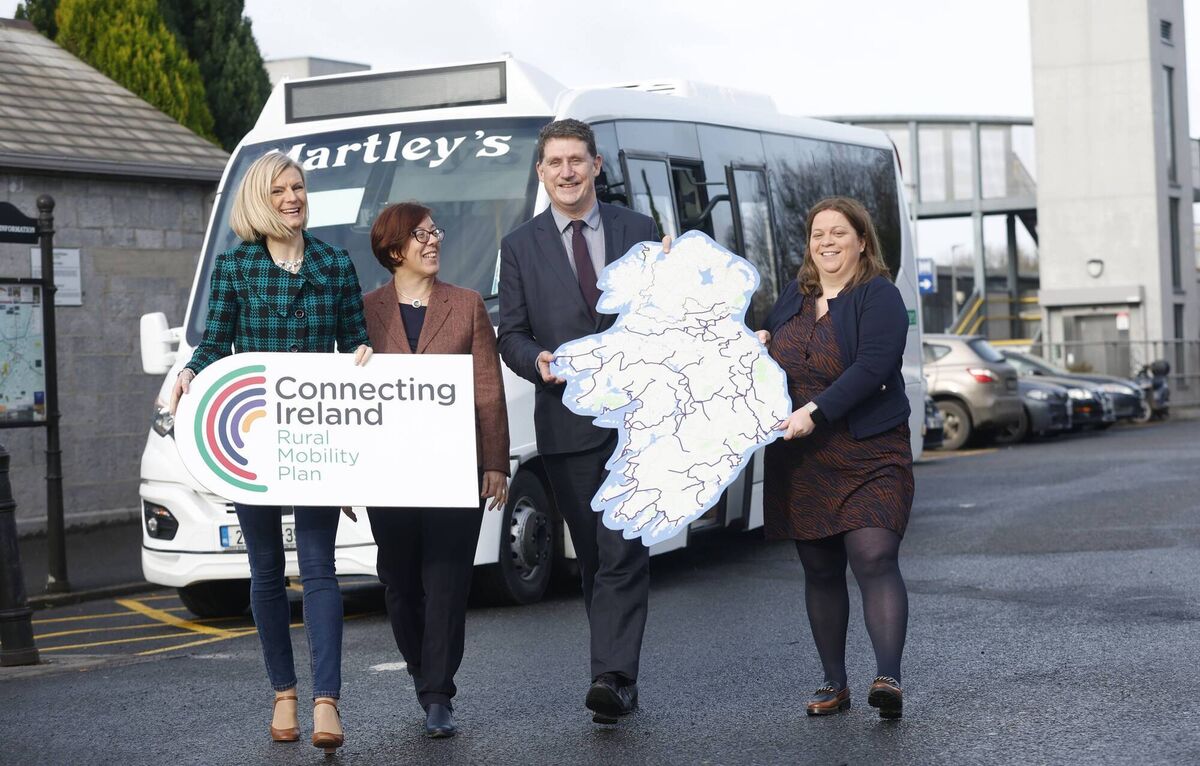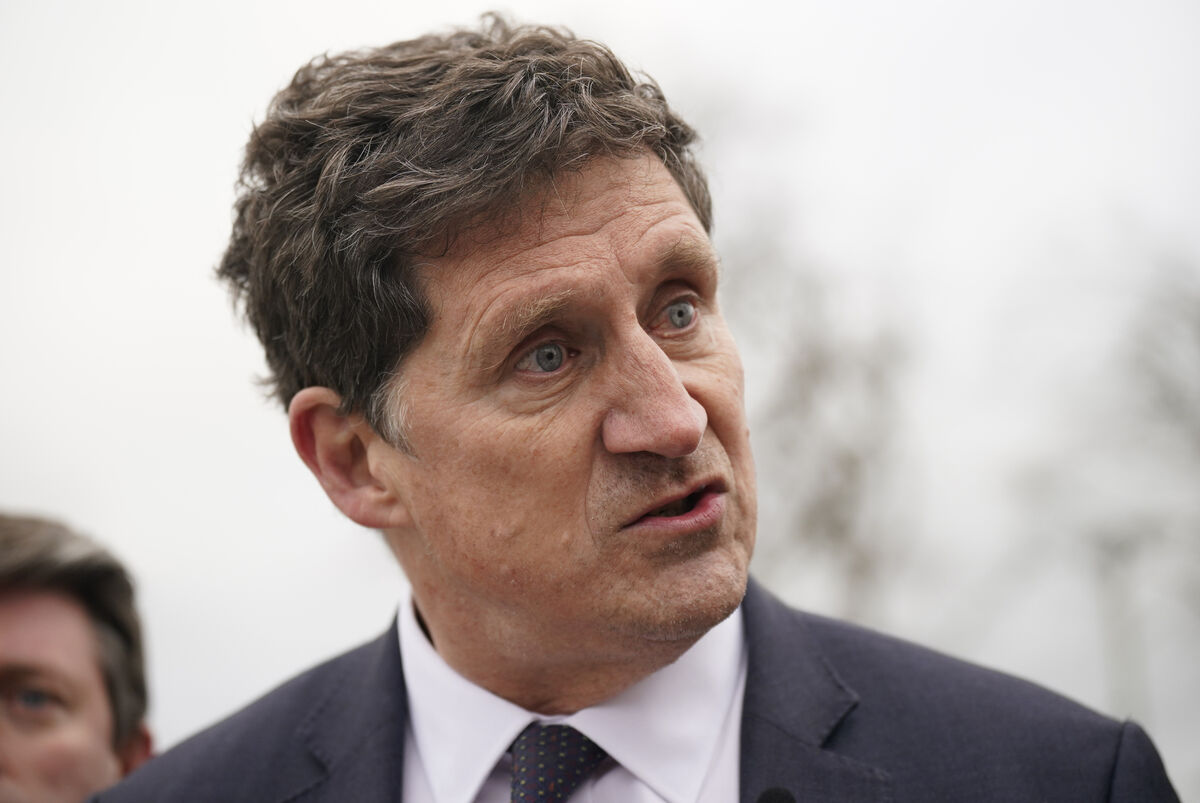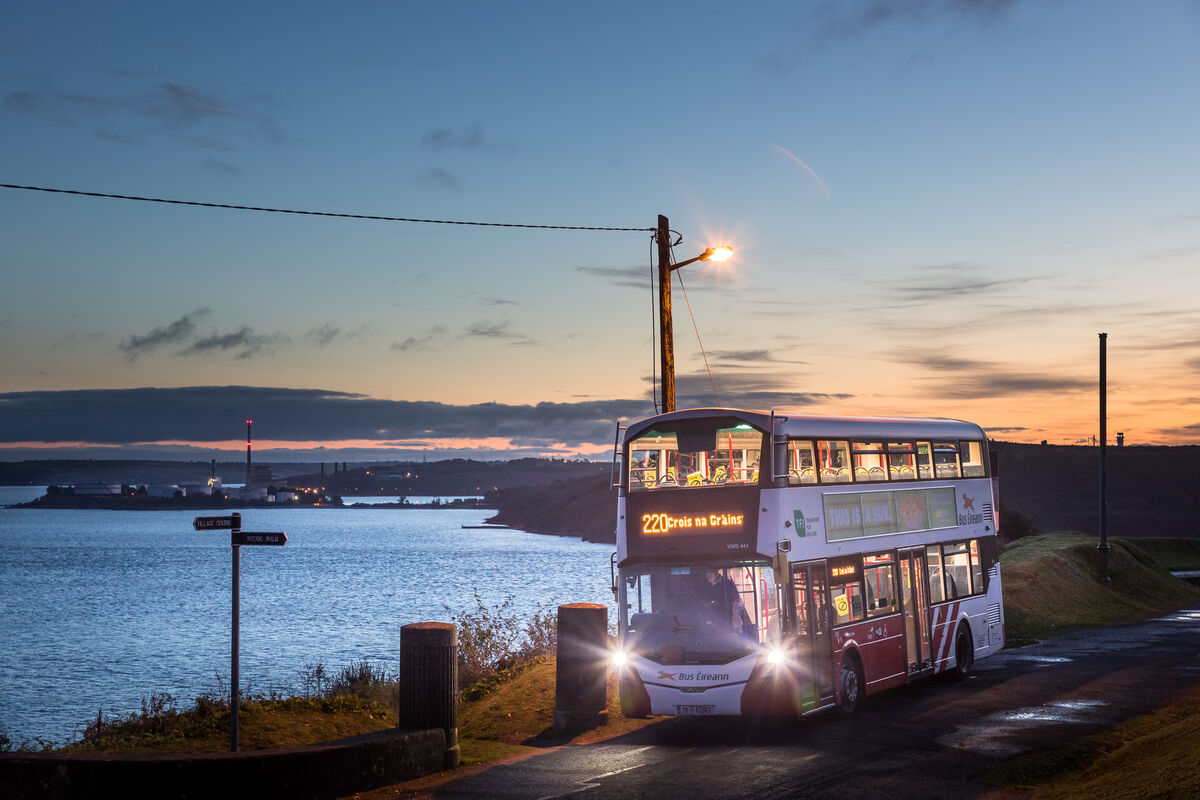'We shouldn't stop the road we are on': Minister aims to keep connecting rural bus services

Eamon Ryan: “I think we have a long way to go because we don't have a fully connected service network that I think we should."
If there is one thing Eamon Ryan is not in short supply of it is ambition and vision.
Understandably buoyed up by the latest figures which show a massive uptake of services on a rural transport network that he has actively trumpeted, he is also proud of what he is doing, and has yet to do.
One of the keystones of what he regards as a “socially progressive” rural transport policy is the money being pumped into rural bus services. Earlier in the week, we heard how there have been massive increases in the number of people using Bus Eireann and Local Link services.
With that in mind, he could be forgiven for resting on his laurels because he has made enhancing existing and creating new routes one of the main priorities of his ministerial career. But he is the first to admit that he has a long way to go to get to the ideals to which he is aspiring.
“I think we're still a long way from the ideal,” he said. “I think we have a long way to go because we don't have a fully connected service network that I think we should.
“But we are at least going in the right direction quickly. The response from the public to new services has been spectacular.
“It shows that when you do start providing good services when there's been a lack of them, the response from the public and particularly a lot of younger people using them, it's really encouraging.”
The Connecting Ireland Rural Mobility Plan behind the increase in services is his five-year programme to increase bus connectivity for people living in rural Ireland. This is about beefing up the Bus Eireann stack of services, as well as investing in Local Link services.
In 2022, the programme delivered 38 new and enhanced bus services nationwide, bringing new bus services to 67 additional towns. Last year, over 60 new or enhanced Connecting Ireland bus services were launched, strengthening existing services and connecting more towns and townlands across the country.
The programme has been rolling out bus services over the past two years but the largest number of services to launch was during last December. Then, some 20 new and enhanced bus services were brought into towns and villages in counties Galway, Mayo, Waterford, Kerry, Sligo and Cavan.
These added an estimated 2.3 million kilometres annually to the Transport for Ireland (TFI) public transport network.
TFI Local Link’s Regular Rural Services (RRS) — the ones on a set time table — carried 3.2 million passengers in 2023. This was a 78% increase on the 1.8 million passenger journeys in 2022.
The department also says that the number of people now using Local Link services has increased seven-fold since 2018. Talk to anybody involved in providing Local Link services and you hit a rich vein of almost evangelical levels of enthusiasm.

Kerry Local Link CEO Alan O’Connell, who has been actively involved in Kerry Community Transport since 2001, said: “The whole thing has exploded.
“Take our services west of Dingle, and you are talking about the number of passenger trips along those routes alone going from 36,000 in 2022 to 46,000 last year.
“We are now operating 160 buses throughout county Kerry every week. Without a doubt, Connecting Ireland has been an absolute game changer.”
What has also changed is the demographic of the average Local Link user. Local Link Limerick Clare Manager Anne Gaughan said: “Your typical user is no longer someone going into town to collect their pension. That would have been typical about five or six years ago.
“More and more people are realising we are around, so we get far more calls, and our demographic has changed completely as a result.”
On the rising numbers, she added: “We’ve definitely increased from 2022. We have seen significant increases in 2023, and although we are still working on our figures, we’ve seen an increase of more than 100% across the two counties.”
Just how many extra services will be coming online this year remains to be seen.
“Our budgets are very tight because there's significant investments we're making in the new services,” Minister Ryan said. “That will include Bus connections in Dublin, Cork, Galway, Limerick, Waterford and new rail services in Limerick, Cork, and Dublin.

“So there's a very limited budget for the scale of change we're looking to make.”
While he has overseen substantial fare reductions in the past year, he says there are not likely to be any more in the foreseeable future.
“If the public had a choice between further fare reductions or more services, I think it is appropriate to go for more services,” he said. “The 50% cut for those under the age of 26 is very significant and that's working, in a sense, the response from the public has been huge.
“I think it's time to put the money into the services as the focus now has to be on new services.”
While Local Link is an established and growing network that doesn’t just connect smaller towns to bigger ones, it is also an invaluable link with the bigger Bus Eireann services.
“The beauty about what is going on is that someone is finally joining up the dots and giving rural Ireland a level of connectivity it never had,” says Kerry Local Link’s Mr O’Connell. The Environment and Transport Minister's plans very much rest on joining up as many more dots as possible.
“It's about connecting to Bus Eireann services and Irish rail,” he said. “The real key thing here is the network effect. When not only can you get a local bus, but it connects to a regional bus which connects to a train and the timetables all start to work.
“So it isn't just about the one service, it's about connecting it all up together.”

He adds: “Improving rural transport is radical change in terms of when you look at the numbers and it's good for everyone. The more we can make the switch to public transport, the more that helps people who are driving because there's less traffic to get stuck in.
“It's very socially progressive, because it typically serves young and old people and those on lower incomes who might not have access to a car. We shouldn't stop the road we are on, we have to keep going and we have to see just how far we can go.”











